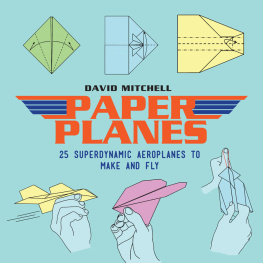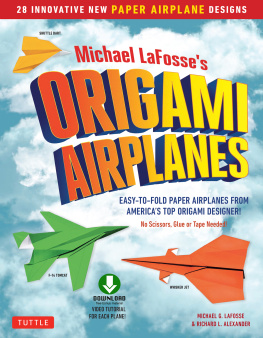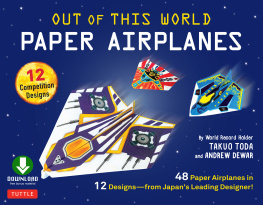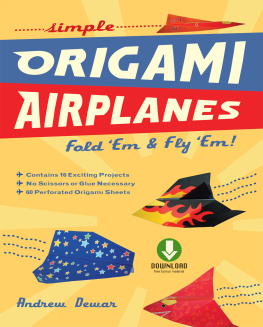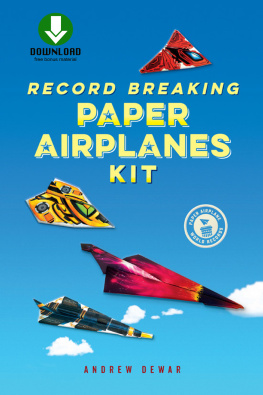David Mitchell - Paper planes
Here you can read online David Mitchell - Paper planes full text of the book (entire story) in english for free. Download pdf and epub, get meaning, cover and reviews about this ebook. year: 2017, genre: Children. Description of the work, (preface) as well as reviews are available. Best literature library LitArk.com created for fans of good reading and offers a wide selection of genres:
Romance novel
Science fiction
Adventure
Detective
Science
History
Home and family
Prose
Art
Politics
Computer
Non-fiction
Religion
Business
Children
Humor
Choose a favorite category and find really read worthwhile books. Enjoy immersion in the world of imagination, feel the emotions of the characters or learn something new for yourself, make an fascinating discovery.
- Book:Paper planes
- Author:
- Genre:
- Year:2017
- Rating:3 / 5
- Favourites:Add to favourites
- Your mark:
- 60
- 1
- 2
- 3
- 4
- 5
Paper planes: summary, description and annotation
We offer to read an annotation, description, summary or preface (depends on what the author of the book "Paper planes" wrote himself). If you haven't found the necessary information about the book — write in the comments, we will try to find it.
Paper planes — read online for free the complete book (whole text) full work
Below is the text of the book, divided by pages. System saving the place of the last page read, allows you to conveniently read the book "Paper planes" online for free, without having to search again every time where you left off. Put a bookmark, and you can go to the page where you finished reading at any time.
Font size:
Interval:
Bookmark:





Check out Strike Aircraft, The Flying Pig, and Stacked Over Logan, for instance, and try them for yourself. Yet others have been chosen simply because they are differentthey break the mould or bend the rules. A paper plane is not just a paper plane. Paper planes can be designed for distance, time aloft, accuracy, stunt flying, or simply just for fun. This book contains outstanding examples of paper planes in all these categories. Whats more, with the single exception of Supersonic, all the paper planes in this book are pure origami designs, meaning they are created just by folding paper, without using cuts, glue, or sticky tape.
Paper planes fly in an entirely different way to real aircraft, which have engines to provide continuous thrust and curved wings to provide lift. Paper planes have no engines: the only thrust they get comes from the way they are launched. In addition, the wings of paper planes are flat, not curved, and do not provide any lift at all. Strictly speaking, therefore, paper planes do not actually fly, they simply glide. The flight path of a paper plane depends on the effects of five inter-related factors: launch height, initial thrust, gravity, stability, and drag. The advantage of extra launch height is obvious.
Given the same air conditions (wind is usually fatal to paper planes because it upsets their stability), the higher a plane is launched the farther it can glide. The effect of initial thrust is much less obvious. You might imagine that the faster a plane is launched the farther it can fly, but this is not necessarily so. A good slow-launch glider will often outfly a fast-launch dart. Gravity affects a paper plane in two ways. It pulls it back to earth, but it also provides additional energy during the flight.
The wings of a paper plane are largely there to resist the downward pull of gravity, but they also allow the plane to take advantage of the additional energy on offer. You can do a simple experiment to demonstrate this. Take two sheets of paper. Screw one into a ball and keep the other flat. Drop them both. The ball drops quickly.
The flat sheet has more air resistance and falls more slowly. It also flies sideways rather than just dropping straight down. Stability is important too. A flat sheet of paper has very little. When it is dropped there is no knowing which direction it will take or what the flight characteristics will be. A good paper plane, on the other hand, has a high degree of stability.
It flies in the correct attitude (the way it sits on the air) in the intended direction. The attitude of a paper plane is determined by the distribution of weight within the design. The weight of a paper plane is normally concentrated towards the front and in the keel, away from the wings. A paper plane that is tail-heavy will stall and fall. Attitude is also affected by the flight profile (the angles between the wings, keel, and other stabilizers). Normally the keel hangs down underneath the wings and acts as a weight to balance the effect of air resistance on the wings.
The dihedral (the angle at which the wings are set to each other) is also important. The folding instructions for each design in this book contain a flight profile to help you set these angles correctly. The keel of a paper plane also acts as a stabilizer, which prevents the plane curving off course. A deep keel, of course, does this better than a shallow one. Additional stabilizers are often created at the wing-tips or elsewhere. Drag is the resistance to forward movement.
It acts as a brake and slows a paper plane down, and if a paper plane slows down sufficiently, it stalls. For that reason most paper planes are designed for minimum drag, which is why they are barely visible when viewed from directly in front of the nose. There are ways, however, in which drag can be employed to advantage. For example, drag can be increased by the creation of elevators at the trailing edges of the wings. This pushes the tail down and raises the nose. Elevators can often be used to improve the flight characteristics of darts and gliders, but they must be employed in a subtle way.
The situation with most stunt planes is different, as they need elevators like a real plane needs aviation fuel. The way you design and trim a paper plane depends on what you want it to do. Darts have narrow wings and are intended to fly fast and accurately in the direction they are launched. They are fairly unsubtle designs and so need very little in the way of trimming. You may occasionally find it helps to curl the tips of the trailing edges of the wings slightly upward (to provide elevators and create drag). This can sometimes ruin rather than enhance the flight characteristics, so only do it if you have to.
It is much more important to fold the paper cleanly and keep all the surfaces as flat and wrinkle free as possible. Gliders have much broader wings and are intended to fly relatively slowly. Because of this their most important flight characteristic is the glide angle. A good glider will have a glide angle that is as shallow as possible. This is achieved by organizing the folds so that the weight is distributed in a balanced way. If the natural glide angle is not shallow enough you can add elevators to improve it.
Elevators however create drag and act as brakes. There is a fine line between trimming a glider too little and trimming too much. 
Every illustration in this book is accompanied by a written instruction. Sometimes the text contains information that isnt demonstrated by the picture alone. To ensure you make the fold accurately, read the instruction beneath the picture first. Before you make a fold, look at the next picture to find out what the result should look like. Ignore the folding symbols for the next fold until you are ready. Once you understand how a fold should be made you can pick the paper up or turn it round so that you make it in the way you find easiest for you.
Next pageFont size:
Interval:
Bookmark:
Similar books «Paper planes»
Look at similar books to Paper planes. We have selected literature similar in name and meaning in the hope of providing readers with more options to find new, interesting, not yet read works.
Discussion, reviews of the book Paper planes and just readers' own opinions. Leave your comments, write what you think about the work, its meaning or the main characters. Specify what exactly you liked and what you didn't like, and why you think so.

